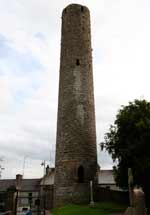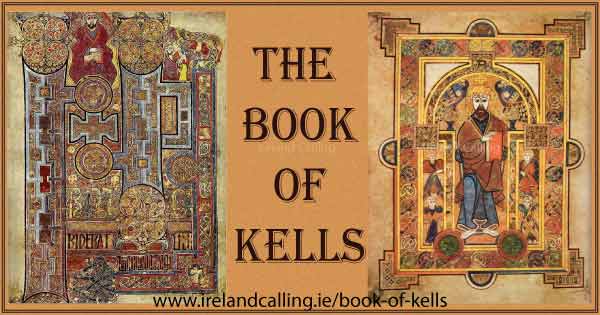The Book of Kells is considered the most stunning and extravagant of all the illuminated manuscripts and is Ireland’s most treasured religious artefact.
It is thought to have been created around 800 AD by Celtic Monks and contains the four Gospels of the New Testament written in Latin and accompanied by lavish illustrations of vibrant colours and complicated designs, often surrounded in gold leaf.
For many years the book was housed at The Abbey of Kells from where it acquired its name. It is now on permanent display at Trinity College Library in Dublin.
Inside the Book of Kells
Irish art
History of the Book of Kells

The origin of The Book of Kells has been widely debated by scholars but most believe it began its creation on the Island of Iona, off the Scottish coast. Iona was frequently attacked by Vikings which lead to most of the monks fleeing for the relative safety of Ireland and Scotland.
The unfinished manuscript was brought with the monks from Iona to Kells in Ireland, thought to be a safe haven, where it was completed. Kells later turned out to be less of a safe haven than imagined and following the book’s creation the Abbey experienced numerous Viking raids.
Precious book was thrown in a ditch

Amazingly, the book survived intact, only to be stolen in the 11th century and later found buried in a ditch without its golden, jewel encrusted cover. The cover was never seen again but the vellum pages endured the weather suprisingly well.
Following this event the Book remained in Kells and was probably passed on to the family of the last Abbot following the dissolution of the monasteries in the 16th century.
The book had a number of owners including the Archbishop James Ussher, until it was sold to the Irish military and later presented to Trinity College, Dublin where it has remained since 1661.
Round Tower at the Abbey of Kells
Perhaps the reason the Book of Kells survived the Viking Raids. On the approach of a Viking force, the monks would use ladders to climb into the towers whose doors were located a story above the ground.
They would then pull up the ladders, perhaps using them to climb further up into the tower to safety while the Vikings did their plundering of the main monastery. It is thought that these towers would also have protected precious religious relics such as the Book of Kells.
